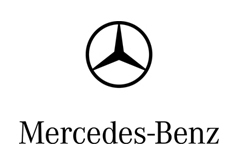Prestigious US Tech-Prize "R&D 100 Award" for NANOSLIDE: Mercedes-Benz awarded Inventor's "Oscar"
 |
LAS VEGA/STUTTGART -- November 6, 2014; The US tech-specialist magazine, R&D Magazine, chose NanoslideŽ as one of the 100 most important high-tech products launched in 2013. NanoslideŽ is an innovative cylinder coating technology which reduces friction in combustion engines. The prestigious R&D 100 Award, also known as the ‘Oscars of Invention’, will be presented to Mercedes-Benz and partner Heller Maschinenfabrik GmbH this Friday, November 7th in Las Vegas (USA). This is yet another award for the innovative technology which also shares part in Mercedes-Benz’ F1 Constructors’ Championship 2014 title. This is the first ever constructors’ title for Mercedes-Benz Silver Arrow in its’ long F1 history. Last weekend’s 11th double victory of this season’s Formula 1 at the US Grand Prix in Austin, Texas, guarantees that a Mercedes-Benz Silver Arrow will also bring home the 2014 Driver’s Championship title. NANOSLIDEŽ brings its advantages to bear in the world champion cars’ V6 turbo engine of the Mercedes-Benz 106A PU Hybrid powertrain.
NanoslideŽ is an innovative technology to reduce fuel consumption of combustion engines. This corresponds to reduction in CO2 emissions. An extremely thin, low-friction coating is applied to the inner surfaces of the aluminium cylinders. This enables fuel consumption to be reduced by several percent.
In 2013, Mercedes-Benz introduced this patented technology in the U.S. market with the V6 turbocharged petrol engine. At the same time, Heller Maschinenfabrik GmbH took NanoslideŽ technology into mass production. In the meantime, NANOSLIDEŽ is also being applied to 4- and 8-cylinder engines in the latest generation of Mercedes-AMG vehicles. NANOSLIDEŽ's virtues are also leveraged in the current Mercedes Formula 1 turbo V6 engine – the technology has played a key role in the recent Formula 1 double victories which help seal the Constructors' World Championship well before the end of the racing season. After the double victory at the US Grand Prix in Austin, Texas, last weekend, Mercedes drivers Hamilton and Rosberg are the last contenders for the driver’s title as well. Further series production Mercedes-Benz engines with NANOSLIDEŽ are set to follow in due course.
Mercedes-Benz received the R&D 100 Award together with Heller Maschinenfabrik GmbH, from Nuertingen, Germany. Heller, a manufacturer of machine tools and complete production lines, developed all stages of the NANOSLIDEŽ process into a global application for mass production and industrialization. Heller integrates the process, including the process steps for preparation and review, not only in the process-chain during engine production, but also ensures high quality process and reliability.
The NanoslideŽ procedure
Twin-wire arc spraying (TWAS) is used to apply an extremely thin iron-carbon alloy coating to the inner surfaces of the cylinders of aluminium crankcases. This produces a nano to ultra-fine, highly wear-resistant material structure with micro-porosity. This micro-porosity captures small amounts oil and ensures effective lubrication during operation. The result is a mirror-smooth surface which reduces friction between piston, piston rings and cylinder wall by up to 50 % and several kilograms of weight are saved. This means that the millimetre thick heavy cast-iron liners, which are normally used in the aluminium cylinder blocks to absorb friction, are no longer needed. Since up to 25% of fuel energy is used to overcome in-engine friction, a reduction in fuel consumption of several percent is also attainable.
The history of the R&D 100 Award
Widely known as the ‘Oscars of Invention’, each year the "R&D 100 Award" identifies and honours the 100 most important technology-relevant products which have been launched the previous year. The award was presented for the first time in 1963; initially under the name I-R 100 (the magazine was originally entitled Industrial Research). The award focuses on products from the industry, higher education institutes and publicly funded projects. For more than 50 years, the R&D 100 Award has been presented in acknowledgement of developments and research results in the fields of new materials and production technologies, chemistry, biochemistry, high-energy physics and innovative consumer products.
Innovations which have received the award since 1963 include the flashcube (1965), the cash dispenser (1973), the halogen lamp (1974), the fax machine (1975), the liquid-crystal display (1980), the Kodak photo CD (1991), the anti-cancer agent Paclitaxel, (1993), the chip laboratory (1996) and HDTV high-resolution television (1998). Recent award winners include magnetic resonance tomography (MRT), laser-based metal shaping and major advances in nuclear fusion experiments in the USA.
Among the other winners of the "R & D 100 Award" 2014 are the high-performance silicon-based plug-in hybrid EV charger (power), the RF-DPF diesel particulate sensor (Environmental Technologies), the HP Apollo platform for high performance accounting (IT), and the APAR - radar for vehicle safety as well as the 100-degree pedestrian detection arc (car communication).


